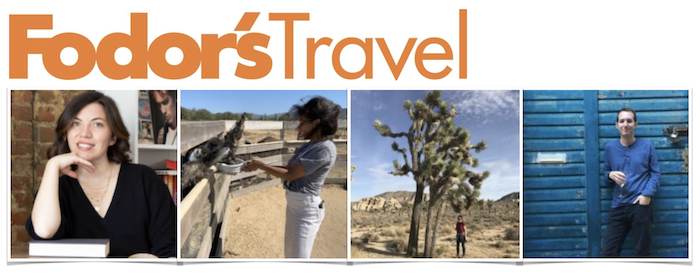MEET THE PRESS: Fodor’s Travel Shares What Gets Noticed In Their Inboxes (And What Doesn’t)
TURNER’s Autumn Enoch recently hosted a roundtable discussion with the editors at one of our favorite outlets — Fodor’s Travel, which has been...
2 min read
Kate Davis : July 15, 2024

For anyone who’s been paying attention, it’s easy to feel like the sky is falling for the media industry. In a New Yorker feature titled “Is The Media Ready For An Extinction Level Event?” Clare Malone summed up just some of the recent devastations:
In just the first month of 2024, Condé Nast laid off a significant number of Pitchfork’s staff and folded the outlet into GQ; the Los Angeles Times laid off at least a hundred and fifteen workers (their union called it “the big one”); Time cut fifteen per cent of its union-represented editorial staff; the Wall Street Journal slashed positions at its D.C. bureau; and Sports Illustrated, which had been weathering a scandal for publishing A.I.-generated stories, laid off much of its staff as well.
It might not be all doom and gloom, however. Extinction is not imminent — but there’s no doubt that things are rapidly shifting in the media landscape, forcing writers, editors and publishers to adapt and evolve. And there are some silver linings if you know where to look. Here are a few we’re keeping our eye on:
Many journalists were caught completely off-guard by the sudden editorial shifts from the pandemic. As a result, they had to adjust their business model and expertise to pay their bills. They expanded their focus by adding specialties to their skill set — wellness, health, science/environment and DIY/cooking. They increased their outlet list to brand blogs and more niche publications. They’ve introduced newsletters on platforms like Substack that help them reach their audiences in a more direct and personal fashion. And they’re becoming more visible on social media, finding new ways to create engaging content. In other words, writers are taking a page from the influencer playbook — and many of them are thriving. Check out our ongoing TURNER Q&A series to get a closer look.
More than ever before, publications are working to incorporate diverse voices into their stories. Many outlets have specific DEI initiatives and goals to raise the voices of underrepresented populations. PR agencies (including TURNER) are also ensuring that client strategies highlight BIPOC storytellers within the destination and speak to diverse audiences through hosting opportunities with BIPOC writers and influencers. There’s also an increased focus on accessibility, especially when it comes to travel writing; with more and more content creators with disabilities are speaking up about how destinations and hotels can do more to better meet their needs. To keep up-to-date, sign up for TURNER’s DEI&B Digest, which we send out quarterly.
The chorus goes around every few years: print is dead! But as usual there’s a counterbalance to the trend. The New York Times recently highlighted how a number of print publications are finding new audiences. “High-end niche periodicals are popping up, but the trend might be most evident in a burst of small-batch, independent outdoors magazines like Adventure Journal, Mountain Gazette, Summit Journal and Ori,” writes John Branch. “They are crowding into quiet spaces of narrow lanes — climbing, surfing, skiing, running and the like — where quality is key, advertising is minimal and subscribers are faithful. Most do not put their content online; this is journalism meant to be thumbed through, not swiped past.”
Artificial Intelligence (AI) has been THE big story of 2024, with many predicting ill effects on media jobs (see the aforementioned Sports Illustrated debacle). Is it just one big storm cloud, or is there a silver lining? At TURNER, we’re looking for the ways that AI can actually help journalists and public relations professionals. Through careful usage, AI can streamline processes, driving efficiency, automating time-consuming tasks and increasing meaningful communication. Hopefully, the work of writers, editors and content creators will be complemented by AI, rather than replaced by it. In particular, we’re loving what our partners at Visit Estes Park are doing with their new Rocky Mountain Roamer initiative, which harnesses the power of AI to help visitors plan a perfect trip to the destination.
Have any silver linings that you’re seeing this year? Drop us a line at digital@turnerpr.com.

TURNER’s Autumn Enoch recently hosted a roundtable discussion with the editors at one of our favorite outlets — Fodor’s Travel, which has been...

Lynn Brown is a writer, professor, digital storyteller and traveler whose work centers on issues of race, place, culture and history. Currently the...

An award-winning journalist, Victoria Leandra works at the intersection of social justice, travel, food and culture. She’s been noted by some big...